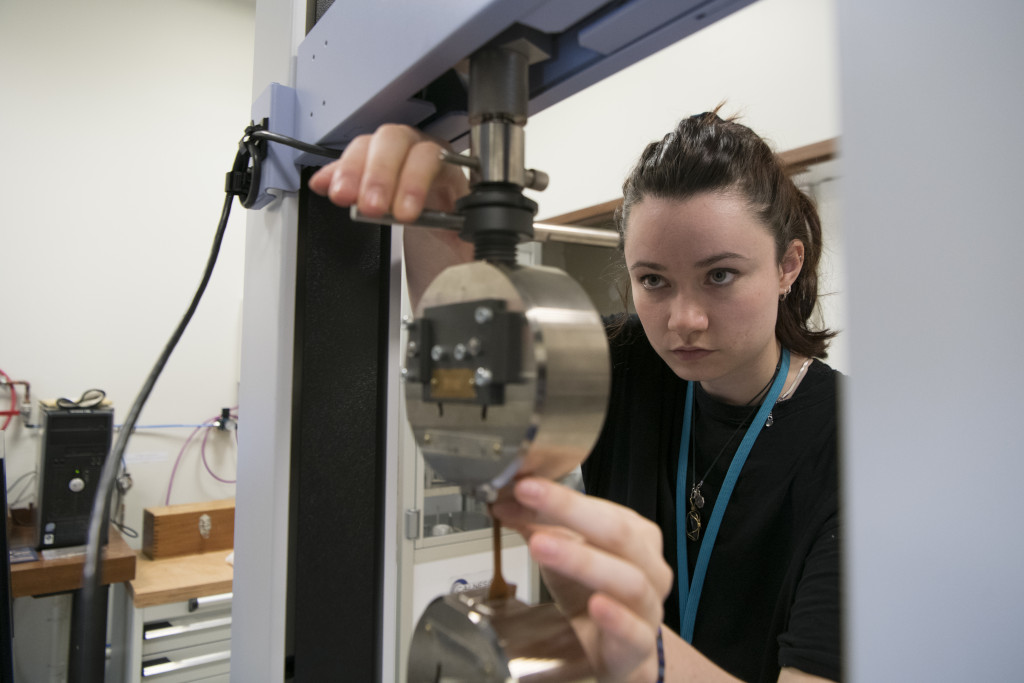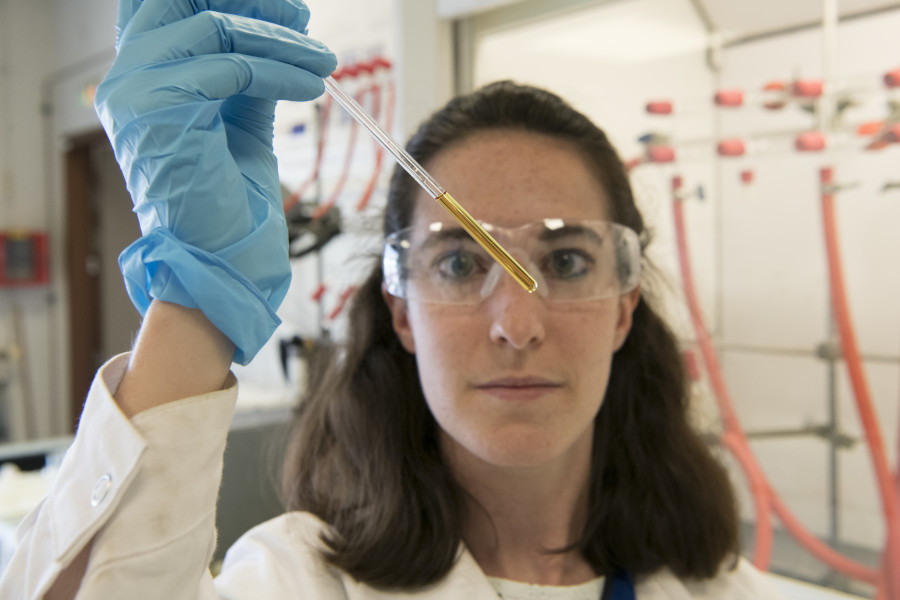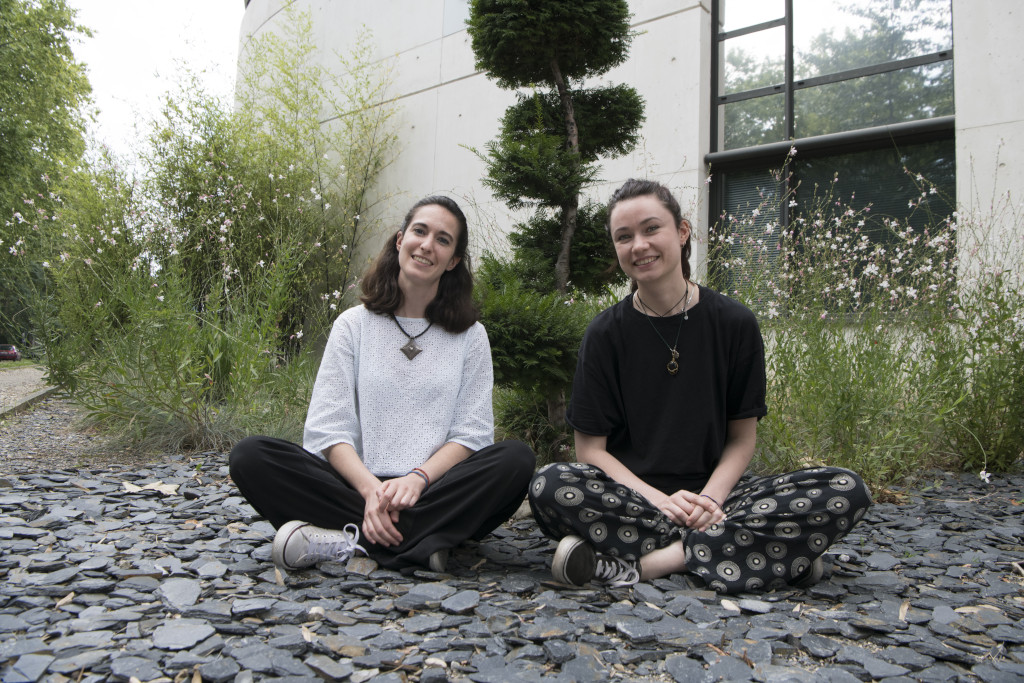VITRIMAT: Two PhD students tackle non-recyclable plastics
To address the issue of plastic recycling, the IMP and CP2M laboratories bank on an innovative European doctoral training program, coordinated by Prof. Eric Drockenmuller.
Liliana Joosten (right) and Benedetta Rigatelli (left) are doctoral students at the IMP and CP2M laboratories. Both come from different countries - Liliana is German, Benedetta is Italian - and when they arrived in Lyon, even before they met, they already shared a common goal: to link fundamental research and industrial application in the development of sustainable materials. This is what led them to apply for the European project VITRIMAT, an innovative training network (ITN).
This research and doctoral training program, financed by �2.8 million for four years and coordinated by Eric Drockenmuller (Professor at the University Claude Bernard Lyon 1), has enabled the recruitment of 11 doctoral students across Europe, including Liliana and Benedetta. Within a consortium of academic and industrial partners, as well as a technical center from 5 EU member states (France, Belgium, Spain, the Netherlands, Germany), they participate in the development of innovative materials based on vitrimers, an alternative to non-recyclable plastics.
Vitrimers, efficient and recyclable materials
Today, there are two types of plastics: those that can be recycled and those that cannot. What distinguishes them? Performances.
Bottles, flasks, packaging... these everyday objects subject to selective sorting do not require any particular resistance, except for watertightness - we speak of low performance plastics. On the other hand, some modern industries such as semiconductors, aeronautics, automotive or energy require plastics that are resistant to heat, pressure or chemical products. However, these high-performance plastics have a major drawback: their very structure makes them non-recyclable.
In 2010, the discovery of vitrimers opened a new perspective. Developed by French researcher Ludwik Leibler and his team, this new type of material could reconcile high performance and recyclability.
Their properties would make it possible to replace certain plastics and glass in industry, while using recycled waste for their manufacture. However, manufacturing processes and yields are holding back the development of vitrimers. "Currently, we can produce a few grams to a few kilograms of vitrimers. But we need to do more and improve the efficiency of the manufacturing processes to make the material usable by industry", says Liliana Joosten.

Between research and industry, an innovative training program
This is precisely the objective of the VITRIMAT project: to bring vitrimers into this new phase of industrialization. Benedetta Rigatelli is working on the exploitation of commodity plastics, while Liliana Joosten is focusing on large-scale production processes for vitrimer-based materials. The IMP and CP2M laboratories, specialized in chemistry, processes and characterization of polymeric materials, offer a privileged environment for the two PhD students. But their research is also intended to be applied during their thesis in an industrial context. "We will have the opportunity to work with partner companies, whose industrial equipment is different from our laboratory equipment, particularly in terms of scale", says Benedetta Rigatelli.

By combining the expertise and technologies of academic and industrial partners, the VITRIMAT project offers these young researchers not only cutting-edge training, but also an environment conducive to developing a broad professional network in the field of sustainable materials in a circular economy context. Starting with the other PhD students who are members of the VITRIMAT project, spread across five European countries. "We regularly talk to each other. We also organized a workshop to exchange information on our projects and create a link as a group despite the Covid-19 crisis" says Liliana Joosten.
VITRIMAT prefigures the development of future applications of vitrimers that meet the requirements of the circular economy of plastics and sustainable development. In a field with high expected employability, Liliana, Benedetta and their European counterparts will be the first beneficiaries of this innovative training through research program. Whether it is for a professional pursuit in academia or industry, "the experience of the VITRIMAT project will help [them] to make this decision", they say.
An article by Matthieu Martin/Direction de la recherche et des ��coles doctorales
Photo credits: / ? Eric Le Roux/Direction de la communication de Lyon 1.
This project received funding from the European Union's Horizon 2020 research and innovation program under Marie Sk?odowska-Curie grant agreement no. 860911.
This article reflects the views of the author only. The European Union is not responsible for any use that may be made of the information contained in this article.
Laboratories
Ing��nierie des Mat��riaux Polym��res (IMP - INSA Lyon/Universit�� Claude Bernard Lyon 1/CNRS/Universit�� Jean Monnet - Saint-Etienne)
Catalyse, Polym��risation, Proc��d��s et Mat��riaux (CP2M - Universit�� Claude Bernard Lyon 1/CNRS/CPE Lyon)



 en
en es
es

